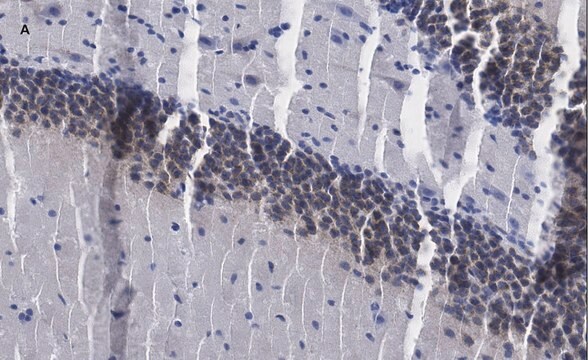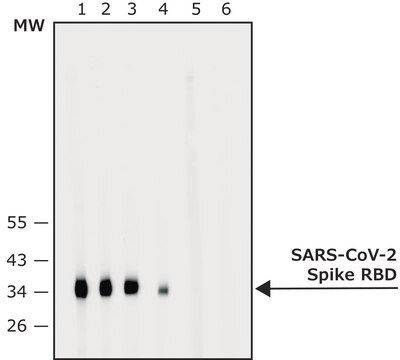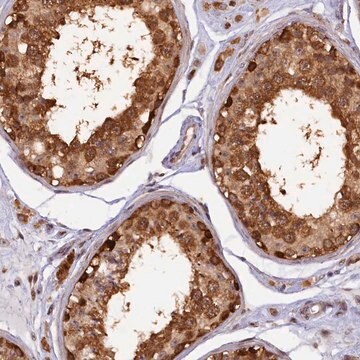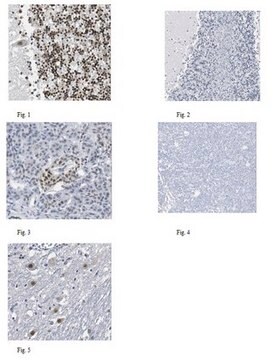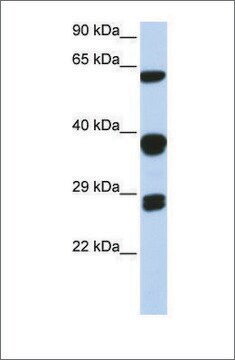S0698
Anti-SmB antibody, Mouse Monoclonal
clone 12F5, purified from hybridoma cell culture
Sinonimo/i:
Anti-SNRPB1, Anti-Sm protein B, Anti-Sm-B, Anti-SmB/SmB, Anti-Small nuclear ribonucleoprotein associated protein B, Anti-snRNP-B
About This Item
Prodotti consigliati
Origine biologica
mouse
Livello qualitativo
Coniugato
unconjugated
Forma dell’anticorpo
purified from hybridoma cell culture
Tipo di anticorpo
primary antibodies
Clone
12F5, monoclonal
PM
antigen ~25 kDa
Reattività contro le specie
human, mouse, canine
tecniche
immunocytochemistry: suitable
immunoprecipitation (IP): suitable
indirect ELISA: suitable
western blot: 0.5-1 μg/mL using HeLa nuclear cell extract
Isotipo
IgG1
N° accesso UniProt
Condizioni di spedizione
dry ice
Temperatura di conservazione
−20°C
modifica post-traduzionali bersaglio
unmodified
Informazioni sul gene
human ... SNRPB(6628)
mouse ... Snrpb(20638)
Descrizione generale
Immunogeno
Applicazioni
- Monoclonal Anti-SmB antibody produced in mouse has been used in:
- western blotting
- enzyme-linked immunosorbent assay (ELISA)
- immunoprecipitation
- immunocytochemistry
Azioni biochim/fisiol
Stato fisico
Esclusione di responsabilità
Non trovi il prodotto giusto?
Prova il nostro Motore di ricerca dei prodotti.
Prodotti correlati
Codice della classe di stoccaggio
10 - Combustible liquids
Classe di pericolosità dell'acqua (WGK)
WGK 1
Punto d’infiammabilità (°F)
Not applicable
Punto d’infiammabilità (°C)
Not applicable
Dispositivi di protezione individuale
Eyeshields, Gloves, multi-purpose combination respirator cartridge (US)
Certificati d'analisi (COA)
Cerca il Certificati d'analisi (COA) digitando il numero di lotto/batch corrispondente. I numeri di lotto o di batch sono stampati sull'etichetta dei prodotti dopo la parola ‘Lotto’ o ‘Batch’.
Possiedi già questo prodotto?
I documenti relativi ai prodotti acquistati recentemente sono disponibili nell’Archivio dei documenti.
Il team dei nostri ricercatori vanta grande esperienza in tutte le aree della ricerca quali Life Science, scienza dei materiali, sintesi chimica, cromatografia, discipline analitiche, ecc..
Contatta l'Assistenza Tecnica.
